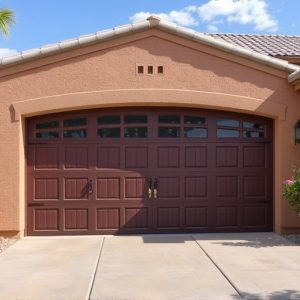Enhancing the safety of Tucson garage doors involves understanding and optimizing sensor functionality. Proximity and photoelectric sensors detect objects, enabling the door to adjust its movement to avoid accidents. Proper installation, regular testing, and calibration ensure accurate readings and reliable performance. Strategic sensor placement in high-risk areas, along with regular maintenance and troubleshooting, guarantees secure operations. By keeping sensors clean, calibrated, and battery-powered, and inspecting them for damage, the overall safety and efficiency of Tucson garage door systems are significantly improved.
Ensure your Tucson garage doors operate safely and smoothly with sensor installation. This comprehensive guide explores every step, from understanding sensor functionality specific to Tucson garage doors, to advanced maintenance tips. Learn how to prepare your space, precisely place and adjust sensors, calibrate for optimal performance, test for common issues, and more. Elevate your home’s safety and convenience – explore our expert advice today!
- Understanding Sensor Functionality for Tucson Garage Doors
- Preparing Your Garage for Sensor Installation
- Step-by-Step Guide to Sensor Placement and Adjustment
- Calibrating Sensors for Optimal Performance
- Testing and Troubleshooting Common Issues
- Advanced Tips for Maintaining Sensor Efficiency
Understanding Sensor Functionality for Tucson Garage Doors
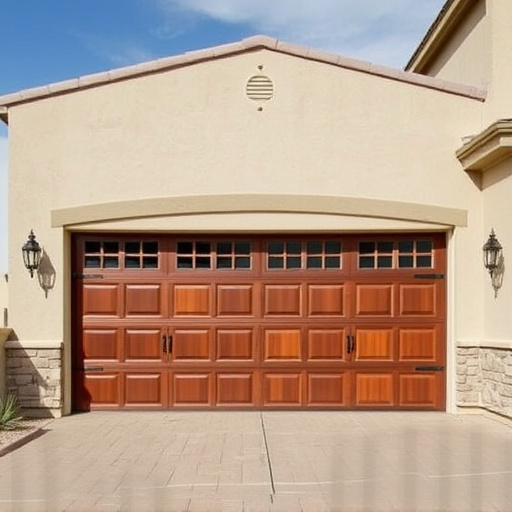
Understanding the functionality of sensors is a crucial step in enhancing the safety of Tucson garage doors. These sensors play a vital role in detecting obstacles and controlling the door’s operation, ensuring both security and convenience. There are various types of sensors commonly used in garage door systems, each with its unique function. Proximity sensors, for instance, use electromagnetic fields to detect objects nearby, allowing the door to adjust its movement accordingly. This is especially beneficial when a vehicle or person might be in the path of the closing door.
Additionally, photoelectric sensors utilize light beams to create a virtual barrier, sensing when an object interrupts this beam. This technology is highly effective for Tucson garage doors as it can prevent accidents by stopping the door from closing if there’s something in its path. Proper installation and adjustment of these sensors are key to their effectiveness, ensuring that they function accurately and reliably to enhance overall safety measures.
Preparing Your Garage for Sensor Installation
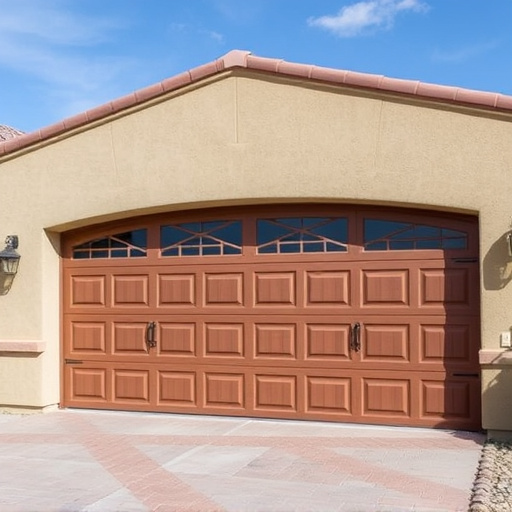
Preparing your Tucson garage doors for sensor installation is a crucial step in enhancing safety and ensuring optimal performance. Begin by clearing the area around the door, removing any obstacles or clutter that might interfere with the sensors’ operation. Check for any existing hardware or wiring that could affect the placement of new sensors; this includes evaluating the condition of the garage door tracks, brackets, and any power sources. A well-organized and clear space allows for precise sensor installation, ensuring accurate readings and reliable functionality.
Next, assess the lighting in your garage to determine the best positions for sensors. Adequate illumination is vital for their effectiveness, especially if you plan to use motion-activated sensors. Ensure there are no shadows or blind spots that could hinder the sensors’ ability to detect movement. Proper preparation of your Tucson garage doors sets the foundation for a safer and more efficient automation system.
Step-by-Step Guide to Sensor Placement and Adjustment
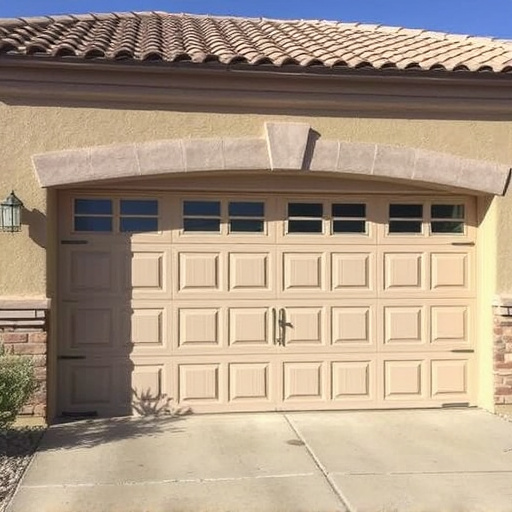
To ensure optimal safety for your Tucson Garage Doors, a strategic sensor installation and adjustment process is essential. Begin by identifying high-risk areas within the garage where potential hazards may occur, such as proximity to moving doors or active door tracks. Next, select suitable sensors compatible with your garage door system; these could be pressure mats, laser sensors, or motion detectors.
Follow a step-by-step approach for sensor placement: mark the chosen locations, ensuring they are clear of obstructions. For pressure mats, place them at entry points and along door paths. Laser sensors should be installed vertically, aiming across the door opening, while motion detectors can be mounted on walls or ceilings, covering broad areas. Adjust each sensor according to manufacturer instructions for precise range and sensitivity settings. Regular testing will verify their functionality, ensuring your Tucson Garage Doors remain safe and secure.
Calibrating Sensors for Optimal Performance
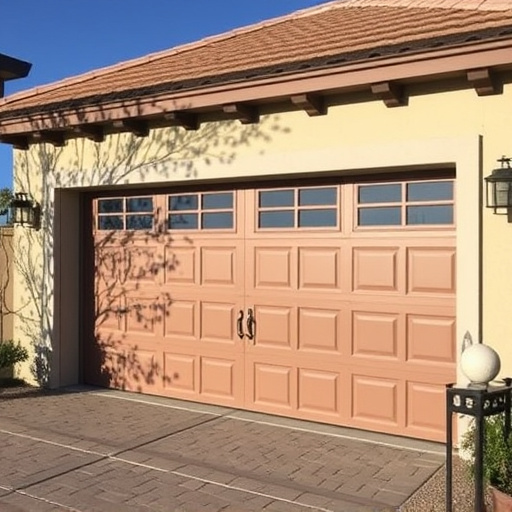
Calibrating sensors is a crucial step in ensuring optimal performance for enhanced safety, especially in systems like Tucson Garage Doors. This process involves fine-tuning each sensor to ensure accurate readings and reliable operation. Proper calibration ensures that the sensors accurately detect and respond to changes in their environment, such as movement or temperature fluctuations. For Tucson Garage Doors, this means guaranteeing that sensors monitoring door position, closure force, or ambient conditions operate at peak efficiency.
By calibrating these sensors, you minimize errors and ensure consistent performance, enhancing overall safety. It’s a vital step in the installation process that should not be overlooked. Regular calibration checks are recommended to maintain the system’s integrity and ensure the garage door operates smoothly and securely.
Testing and Troubleshooting Common Issues
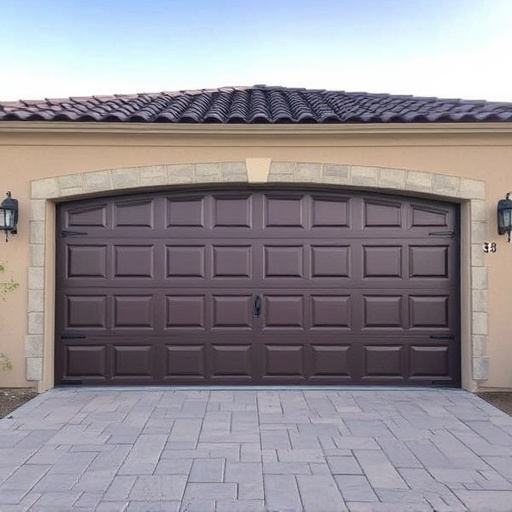
When it comes to sensor installation and adjustment for enhanced safety in your Tucson Garage Doors, testing and troubleshooting common issues is an essential step. After setting up the sensors, perform a series of tests to ensure they’re functioning optimally. Start by simulating various scenarios like a low or blocked path to observe how the doors respond. If the doors fail to close or open as expected, it could indicate sensor misalignment or a malfunctioning component.
Troubleshooting common issues might involve checking for power supply problems, loose wiring, or damaged sensors. Verify that all connections are secure and that the sensors have adequate line-of-sight to navigate smoothly. Consult the manufacturer’s guidelines or reach out to professionals if you encounter persistent challenges, ensuring your Tucson Garage Doors operate safely and efficiently.
Advanced Tips for Maintaining Sensor Efficiency
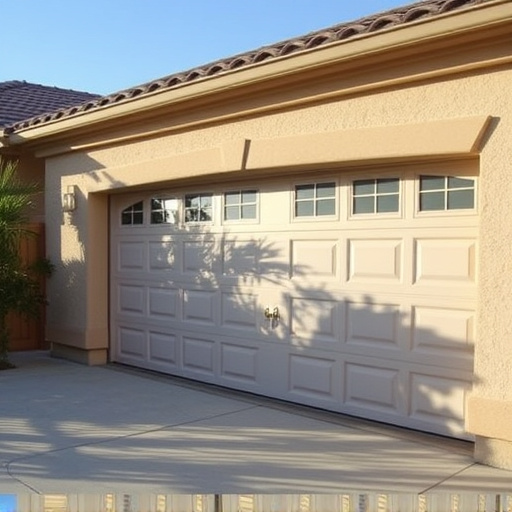
Maintaining sensor efficiency is paramount for enhancing safety, especially with Tucson Garage Doors. Regular cleaning and calibration are essential practices. Dust, debris, and grime can accumulate on sensors over time, impacting their performance. A simple wipe-down with a damp cloth can eliminate these obstructions, ensuring accurate readings. Additionally, calibrating sensors periodically ensures they remain aligned with optimal operating conditions. Many modern Tucson Garage Doors come equipped with self-calibration features, making this process user-friendly and efficient.
For maximum effectiveness, check sensor batteries regularly. Dead or weak batteries can cause false readings or sensor failure. Replacing them promptly guarantees uninterrupted monitoring. Moreover, inspecting the sensors for any physical damage or obstructions is crucial. Even minor encumbrances can disrupt their function, so a thorough examination should be conducted to maintain overall system integrity.
The installation and adjustment of sensors on your Tucson Garage Doors is a straightforward process that significantly enhances safety. By following our comprehensive guide, from understanding sensor functionality to advanced maintenance tips, you can ensure optimal performance and peace of mind. Regular calibration and testing further safeguard your garage’s security, making it a safer space for you and your family. Equip yourself with knowledge and take control of your Tucson Garage Doors’ safety today.
